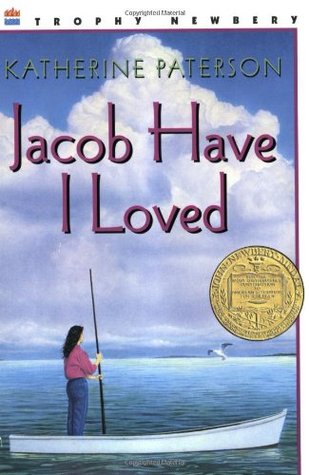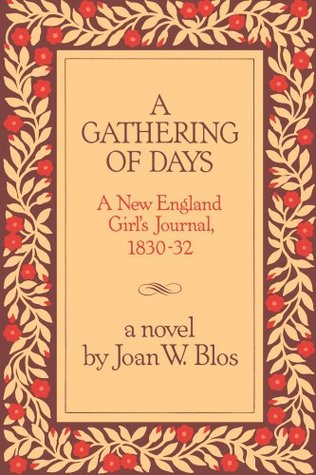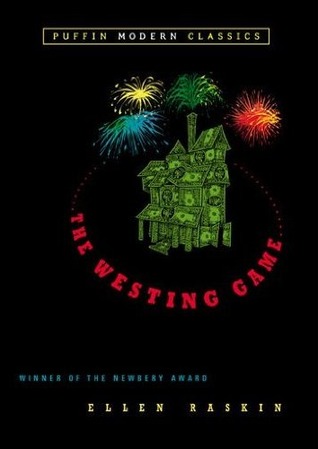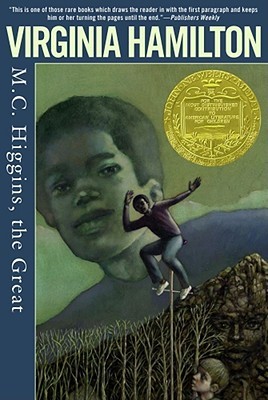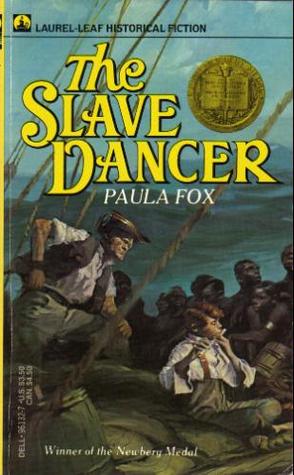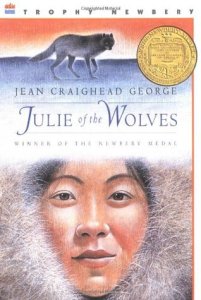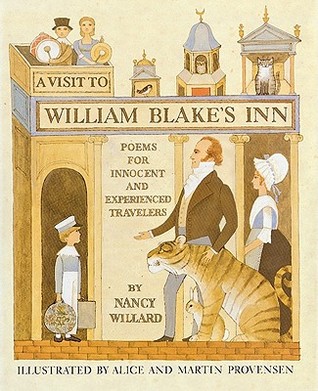
This is kind of a sad one for me (Benji) since it will by my last Newbery Pie review for a while. Due to other commitments, I’ll be stepping away for a few months. Sara will be carrying the Newbery Pie torch by herself , and will be going back to some of the books that we had already read and reviewed before she joined, and adding her two cents. Today, we’ll be taking a look at A Visit to William Blake’s Inn.
Sara’s Review: William Blake was a 19th century British artist and writer, most famous for his two poems “The Tyger” and the “The Lamb.” In the 1982 Newbery winning book, A Visit to William Blake’s Inn, Nancy Willard bring Blake back to life as a whimsical, fantastical character with a magical inn. He has a magical flying car that transports his guest and he wears a marmelade hat. In a way, he reminded me of Dahl’s Willy Wonka. At William Blake’s Inn, you are taken to your room by a rabbit, you might have a bear for your bed and eating breakfast “on the house” is taken quite literally. William Blake will take you for a walk on a Milky Way. He ends arguments with dances and tells delightful bedtime stories, which teach universal lessons like “All things are new in the morning.”
I found this book quite delightful. The text and illustrations work seamlessly to transport the reader to a magical place. I like how you could read this as a continuous story or open it to a page in the middle and just read that individual poem. My favorite illustration is opposite “The King of Cats Orders an Early Breakfast.” A table is set precariously on top of the inn, only kept upright by magic. The King of Cats is at the table, crown on his head and a napkin tied around his neck. Servers are bringing up platter to the table by ladder. It is before dawn, so all of this takes place under a starry, moonlit sky.
A Visit to William Blake’s Inn is the first picture book that won the Newbery Award. Some people have difficulty wrapping their heads around a picture book winning the Newbery. The fact that the main character is an author I am very familiar with from my undergraduate studies is a good reminder of the type of critical reading that is the task of the Newbery Committee. Like an English major, they must analyze a work based on criteria. The members are more widely read than even the biggest of book nerds and they read books multiple times. Part of loving the award is respecting the Newbery Committee members and the decisions they make. I give A Visit to William Blake’s Inn 4 out of 5 stars.
Benji’s Review: I know it’s our last time reviewing a book together for a while and I should probably play nice, but I’m afraid that I have to disagree with Sara about a couple of things. I didn’t like William Blake’s Inn all that much, story wise. I loved the illustrations, the Provensens are amazing, and I have no problem with the Caldecott honor is received. It totally deserved it, but for a book to beat Ramona Quimby, Age 8, it’s got to be a spectacular book, and I thought it was just ok. The nonsensical poems were decent, but the overall text was in no way better than Ramona.
I have no problems with a picture book winning the Newbery. I was so happy for Last Stop on Market Street, but if a picture book does win, it needs to be more distinguished than all the other books of that year, and for me, this one just didn’t beat Ramona.
Like Sara said, the Newbery committees are super-well read. They read everything, but that doesn’t mean that their decisions are always the best. There are always politics involved, and certain members of the committee are sometimes more popular or “important” than others and their opinions hold a little more weight (just like any other committee). It isn’t a perfect system, but we usually get a really good book out of it. They just sometimes drop the ball. (Cough Charlotte’s Web Cough Cough) and I feel like they did this time. A Visit to William Blake’s Inn would have made a fine Newbery Honor, but I’m not convinced it deserved to win the whole shebang.
I give it 3 out of 5 Newbery Pies.
